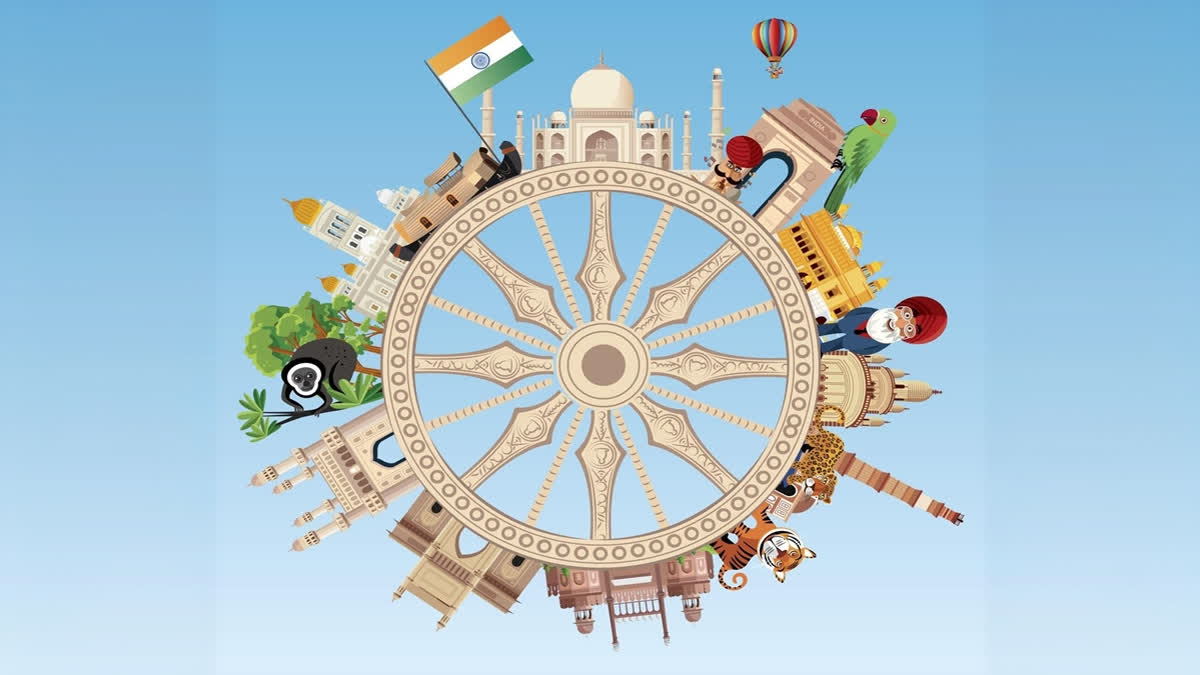World Heritage Week, observed from November 19 to November 25, is a global celebration dedicated to preserving and promoting cultural and historical heritage. Led by UNESCO and supported by international organizations, the Archaeological Survey of India (ASI), takes responsibility for holding the event in India. The theme for World Heritage Day 2024 is 'Discover and Experience Diversity'.
Tourists can enter the Taj Mahal, Agra Fort, and other sites in Agra for free on November 19 during World Heritage Week. The Archaeological Survey of India (ASI) has declared this week from November 19 to 25 as free entry days for Indian and foreign visitors.
History:
World Heritage Week was created in 1945 to promote moral and intellectual unity following two catastrophic world wars. It was intended as a way to support enduring world peace. The week has developed into a celebration that goes beyond celebrations over the years, actively encouraging citizens, communities, governments, and individuals to take part in the preservation of priceless historical sites.
Significance:
- Increasing public awareness: It highlights the value of natural and cultural heritage, encouraging respect and understanding between various communities.
- Supporting conservation initiatives: It motivates action to safeguard and conserve these priceless locations, guaranteeing their continued existence for upcoming generations.
- Improving intercultural communication: It honours the diversity and depth of human heritage while fostering mutual respect and understanding.
- Motivating future generations: It equips youth to become conservationists by fostering a sense of stewardship and accountability for preserving our common legacy.
43 UNESCO World Heritage Sites in India Till September 2024
As of September 2024, there are 43 UNESCO World Heritage Sites in India with the recent inclusion of “Moidams – the Mound-Burial System of the Ahom Dynasty from Assam. “The Sacred Ensembles of the Hoysala, the famed Hoysala temples of Belur, Halebid, and Somananthpura in Karnataka have been added to the United Nations Educational, Scientific and Cultural Organization (UNESCO) World Heritage list.
This inclusion marks the 42nd UNESCO World Heritage Site in India and comes just a day after Rabindranath Tagore’s Santiniketan also received this distinguished recognition. The decision to include Santiniketan in the prestigious list was made during the 45th session of the World Heritage Committee, held in Saudi Arabia, reaffirming its importance on the global stage.
Famous World Heritage Sites in India
- Taj Mahal, Agra
- Khajuraho, Madhya Pradesh
- Hampi, Karnataka
- Ajanta Caves, Maharashtra
- Ellora Caves, Maharashtra
- Bodh Gaya, Bihar
- Sun Temple, Konark, Odisha
- Red Fort Complex, Delhi
- Sanchi, Madhya Pradesh
- Chola Temples, Tamil Nadu
- Fatehpur Sikri, Uttar Pradesh
- Nalanda, Bihar
- Sanchi Stupa, Madhya Pradesh
- Amer Fort, Rajasthan
- Qutub Minar, Delhi
Famous Heritage Sites in the World
- Memphis and its Necropolis, Egypt
- The Acropolis, Greece
- Petra, Jordan
- The Great Wall of China
- Taj Mahal, India
- Historic Centre of Rome, Italy
- Machu Picchu, Peru
- Rapa Nui National Park, Chile
- Persepolis, Iran
Types of UNESCO World Heritage Sites in India
Cultural Heritage Sites in India: Cultural Heritage Sites in India are living testimonies of the country's deep-rooted history and diverse cultural tapestry. These places are architectural marvels and artistic treasures, preserving the heritage of India for generations to come.
Natural Heritage Sites in India: Natural Heritage Sites in India, like India's Sundarbans, Western Ghats, and Kaziranga National Park, are vital ecosystems recognised by UNESCO. These sites conserve unique biodiversity, landscapes, and habitats. They are a global asset, contributing to scientific research and environmental balance.
Mixed Heritage Sites in India: Mixed Heritage Sites in India exhibit both cultural and natural significance. While India is home to one Mixed Heritage Site so far, many other sites are on the tentative list to be considered for nomination. These include the Cold deserts of Ladakh and the Keibul Lamjao conservation area of Manipur.



